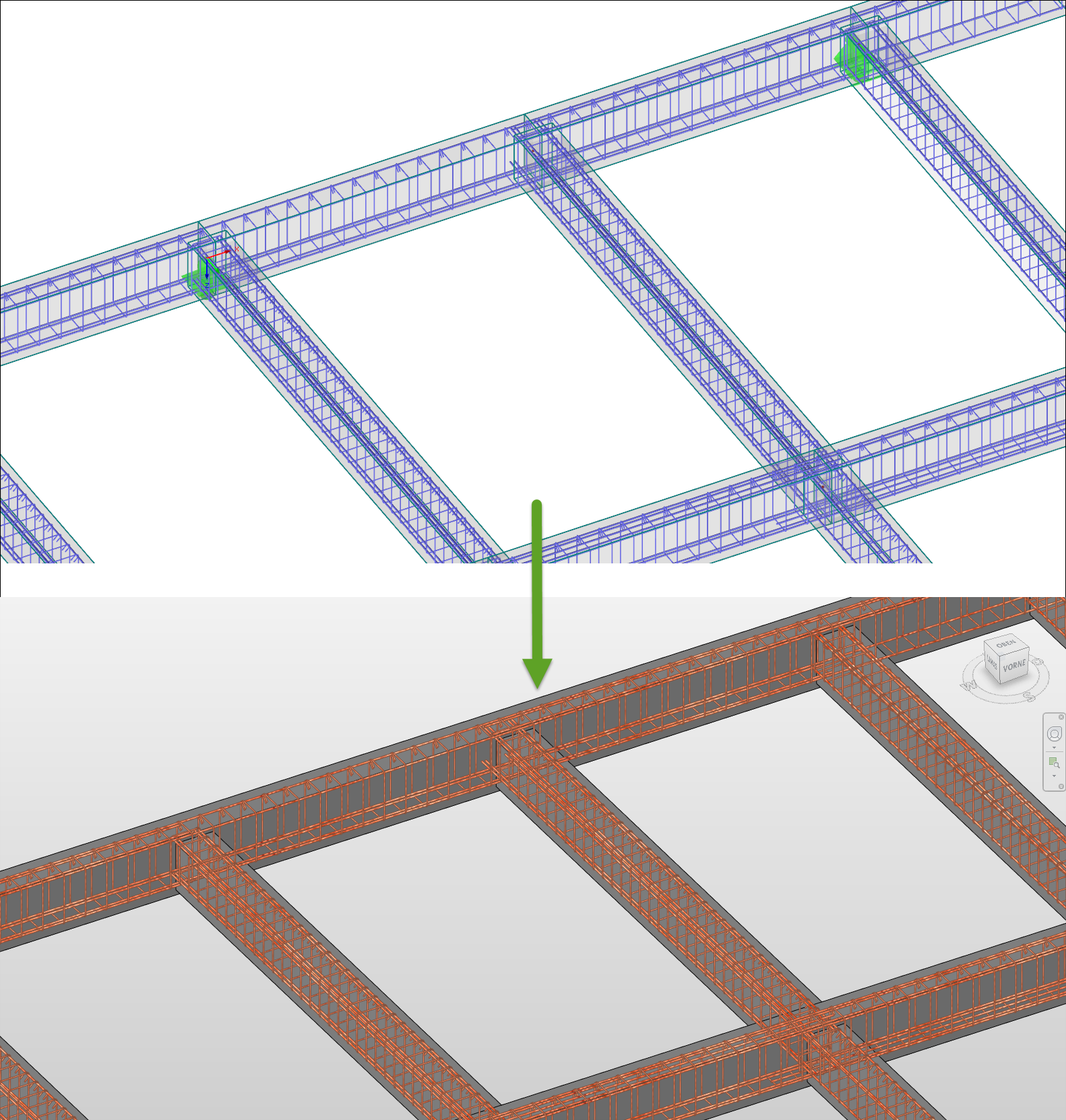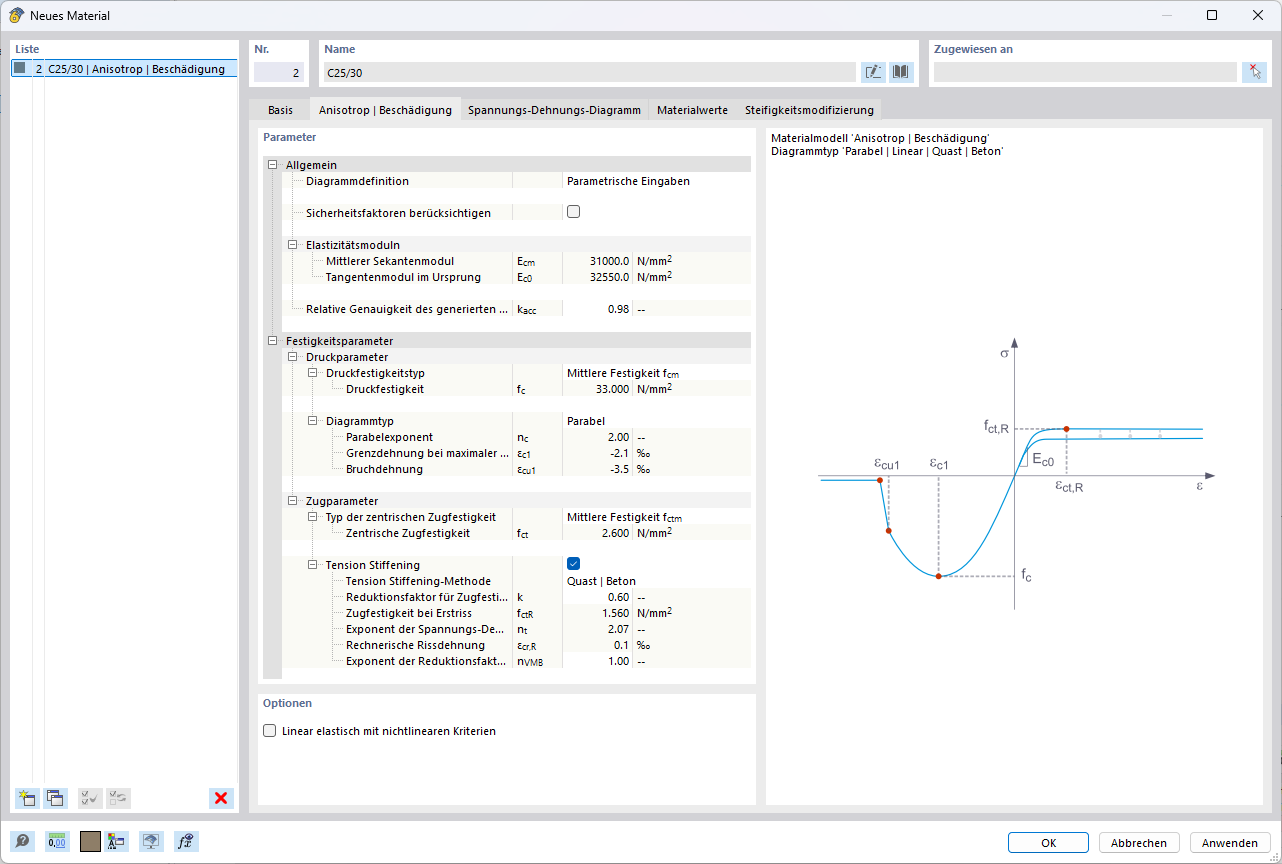可以通过“新建线焊连接”对话框来定义线焊连接,如图1所示。 The selection of joint type is important for the definition of a line welded joint. There are several types available in the program: butt joint, corner joint, lap joint, and tee joint. Please note that it is also necessary to define a weld type. The list offers different options for performing weld design checks depending on the joint type.
Line welded joints can be arranged “Continuously” over the entire line length. Thus, when you enter the weld parameters, you must assign the “Weld size” to define the weld thickness, whereas the “Weld length” is taken from the line length. For asymmetrical weld configurations, the position of the weld seam can be defined in relation to the connected surface (red part in the dialogue graphic). If the "Surface Normal (+z)" option is selected, the weld seam is defined on the bottom of the connected surface, whereas the "Reverse Surface Normal (-z)" option allows a definition on the top without having to reverse the surface orientation.
A line welded joint can be assigned to a line that belongs to or is integrated into the subsequently selected surfaces. The line and surface numbers may be assigned in the upper right corner of the dialog box, or by graphical selection in the working window. Please note, that the order in which the surfaces are selected is not arbitrary. By definition, the first surface is always considered to be the "connected surface" and is used for determining the stress in the weld seam.
The orientation of the weld seam is defined by the following rules:
- w corresponds to the weld seam axis and is always identical to the x-axis of the line on which the line weld seam is defined.
- s is orientated parallel to the z-axis of the first surface from the line weld definition (simplified method) or is parallel to the effective weld throat (directional method).
- j is orientated orthogonally to the w-s plane.
The coordinate system of the weld seam can be activated/deactivated using the display navigator.
Once you create and assign the line welded joints, you can make basic specifications regarding the line weld joint analysis. This can be done via the Stress-Strain Analysis – Configuration tab of the same dialog box (Image 4), or via the Stress-Strain Analysis entry in the navigator (Image 5).
First, you can select the stress components relevant for your calculation. You can analyse normal stresses in the j-direction σj (corresponds to σ⊥ in EN 1993-1-8 [1]), as well as the transverse shear stresses τs (equal to τ⊥ in [1]) and longitudinal shear stresses τw (corresponds to τ‖ according to [1]) at the critical verification points of the weld seam (for more details, please refer to )RWIND 3。 Various equivalent stresses are also available.
For stress components with defined limit stress, utilisation values are calculated in addition to the stress values. This means that stress verification checks in accordance with national codes, such as the EN 1993-1-8 [1], can be carried out with little effort.
Special options are also available in this dialog box. For instance, you can control the smoothing of the stresses (that is, the distribution of the local stress peaks over the weld seam length) and the stress analysis method. For weld configurations with fillet welds, the stresses can be determined with reference to the connected surface orientation (simplified method according to EN 1993-1-8 [1]) or the inclined effective weld throat (directional method according to [1]).
Weld eccentricities can be considered if relevant. This way, additional moments may occur, for example, in the case of one-sided fillet weld structures.
Once the calculation is done, the stresses in the line welds are available in both graphical and tabular form. The navigator allows you to control which stresses will be graphically displayed, whereas the table provides an overview of the stresses by design situations, loading, line, and location.
The result details provide additional intermediate results such as the opening angle between the connected surfaces, the inclination angle of the effective weld throat or line weld forces per unit length M, W, V and P that provide the basis for stress calculation.



















































_1.jpg?mw=350&hash=ab2086621f4e50c8c8fb8f3c211a22bc246e0552)


-querkraft-hertha-hurnaus.jpg?mw=350&hash=3306957537863c7a7dc17160e2ced5806b35a7fb)












